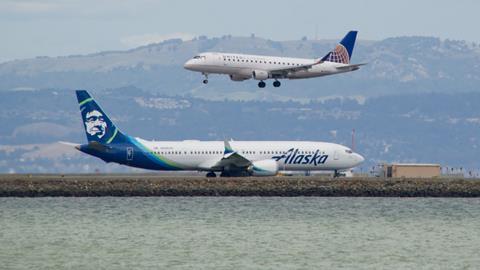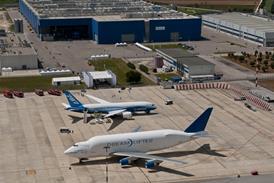US Senator Tammy Duckworth is calling on the Federal Aviation Administration to examine why Alaska Airlines pilots were unaware of a critical feature of the 737 Max 9’s cockpit door ahead of the 5 January depressurisation event on Alaska flight 1282.
The Illinois senator, who chairs the senate’s sub-committee on aviation safety, operations and innovation, urged FAA Administrator Michael Whitaker in a 4 April letter to “examine why pilots were not aware that the cockpit door of the 737 Max 9 was designed to automatically open” if the cabin loses pressure.
“This unknown, undisclosed feature resulted in the flight crew being surprised when the rapid depressurisation event caused the cockpit door to slam open, sucking an emergency check-list out of the cockpit and removing one of the pilots’ headsets,” Duckworth writes to Whitaker.

“Keeping pilots in the dark about features on the Max has become a pattern at Boeing,” Duckworth continues. “This is the third time Boeing has failed to disclose a flight deck feature to 737 Max pilots. This is dangerous, and the FAA must not view this latest omission in isolation.”
For example, Duckworth points to Boeing previously omitting the presence of the manoeuvring characteristics augmentation system (MCAS), software that was involved in a pair of 737 Max crashes that killed a total of 346 people in 2018 and 2019.
The Max 8 flight manual omitted mention of MCAS, which “left the flight crew on Lion Air flight 610 unaware of what was forcing their aircraft into a nose-dive”, Duckworth says.
She also points to since-resolved issues with how the 737 Max’s flight computer responds to angle-of-attack (AoA) indicator failures.
”Boeing discovered this [AOA issue] in 2017, but decided to postpone fixing it until 2020 – and, until then, keep producing more planes with this same defect, in further violation of the Max 8’s type design – while continuing to conceal this from pilots,” Duckworth says in her letter.
Following the January 5 mid-flight door plug blow-out that has placed Boeing under intense scrutiny from airlines, lawmakers and the public, the US airframer updated its operating manual for the 737 Max to include ”that the cockpit door opens in order to equalise pressure… in the event of a rapid depressurisation of the passenger cabin”.
”This functionality equalises pressure between the flight deck and the cabin,” Boeing says. ”We are committed to continued transparency and sharing information with our regulator and operators.”
The fallout from flight 1282 has been far-reaching, including the planned departure of chief executive David Calhoun and the immediate retirement of Boeing Commercial Airplanes boss Stan Deal, the latter of whom has been replaced by former chief operating officer Stephanie Pope.
Alaska recently disclosed that Boeing paid it $160 million in the first quarter as compensation for the roughly month-long 737 Max 9 grounding that followed flight 1282, and that it expects further payments related to the incident in the future.































